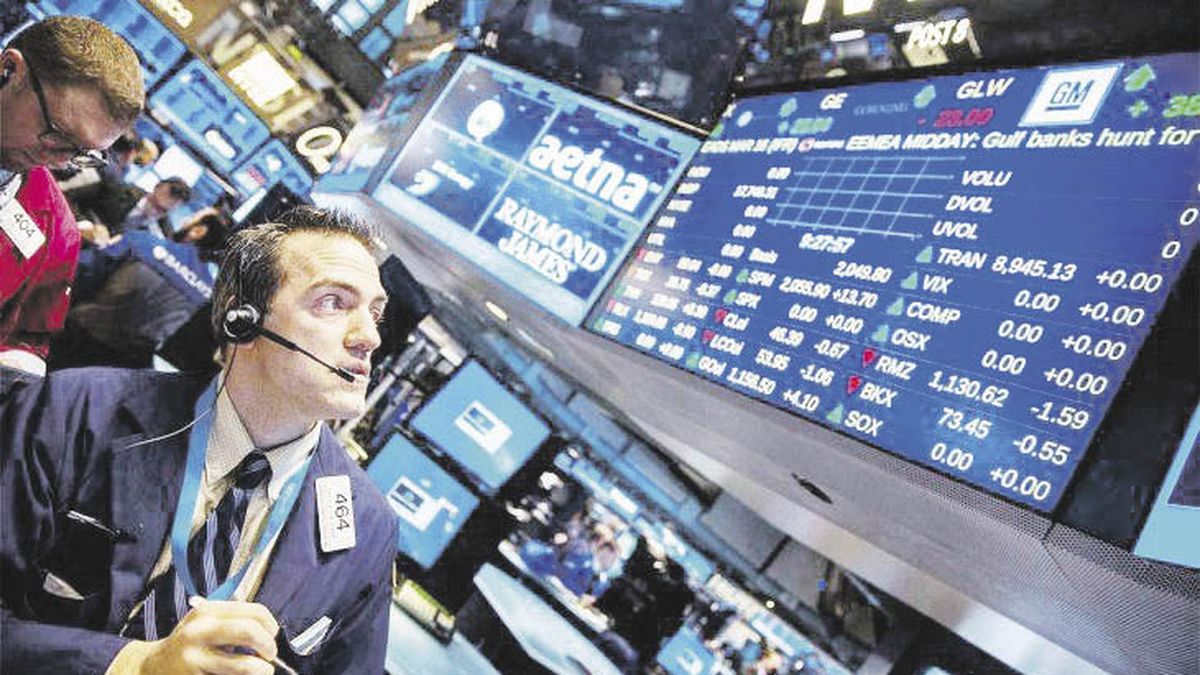The two institutions must calibrate their announcements: If they adjust interest rates prematurely, they could paralyze the recovery, while if they wait too long, it will be difficult to control inflation, which has returned after a decade of controlled prices. The United States has emerged from the recession but employment has not yet recovered to its pre-pandemic level.
The omicron variant raises concerns of a new worsening of logistics problems, which seemed to have improved in recent weeks, as happened with the progressive decongestion of the port of Los Angeles, California.
But the increase in prices in the United States, at an unprecedented rate in almost 40 years for the month of November (6.8%) could weigh heavily.
Markets await the announcement of an acceleration of the reduction of the Fed’s asset purchase program.
Rhythm
In November a change of rhythm had already begun: from 120,000 million dollars per month, purchases must be reduced by 15,000 million per month until they reach zero in mid-June 2022.
“If an argument was needed to convince the US Federal Reserve of the need for a quicker exit from ultracomplant monetary policy, it was provided by inflation” in November, analyzed Elmar Volker of the LBBW bank.
That acceleration would open the door to one or more interest rate hikes in 2022. But such hikes “faster than anticipated could constitute a policy error” and stunt growth, warned Kathy Bostjancic, chief economist at Oxford Economics.
If the Fed hints at interest rate hikes by 2022, it will increase the pressure on the ECB. The European body has so far been reluctant to propose a schedule for normalizing its monetary policy.
From the point of view of inflation, the two institutions
These do not follow the same line, and Fed Chairman Jerome Powell recently acknowledged that it is not a transitory difference.
Passenger
Christine Lagarde, president of the ECB, recently said she was “convinced” that inflationary pressure is temporary and that it will reduce in 2022, thanks to the expected drop in energy prices.
Prices in the euro area have grown 4.9% in the last year to November, the highest in 30 years. But the omicron variant came to complicate the equation by shaking the next exit from the crisis.
Although the most rigorous of the Board of Governors of the ECB seek “a somewhat impetuous exit from complacent monetary policy,” the omicron variant could impose “a bit of humility,” predicted Ludovic Subran, chief economist at Allianz.
Those responsible for the ECB have repeated that the purchases of assets of the emergency program against the pandemic (PEPP) will be stopped as planned from the second quarter of 2022. These purchases are currently taking place at a rate of 80,000 million euros (96,000 million dollars) per month.
But given the doubts raised by the new variant, will it be necessary to compensate for the sharp decline in purchases after the PEPP?
One option would be to extend the previous purchase program
of assets called APP, of around 20,000 million
euros ($ 24 billion) per month. Such an announcement would only be made at an upcoming meeting in early February, according to observers. A rate hike in the euro zone is “highly unlikely” by 2022 so as not to jeopardize the recovery in Europe, Lagarde insisted.
AFP Agency
Source From: Ambito
David William is a talented author who has made a name for himself in the world of writing. He is a professional author who writes on a wide range of topics, from general interest to opinion news. David is currently working as a writer at 24 hours worlds where he brings his unique perspective and in-depth research to his articles, making them both informative and engaging.




